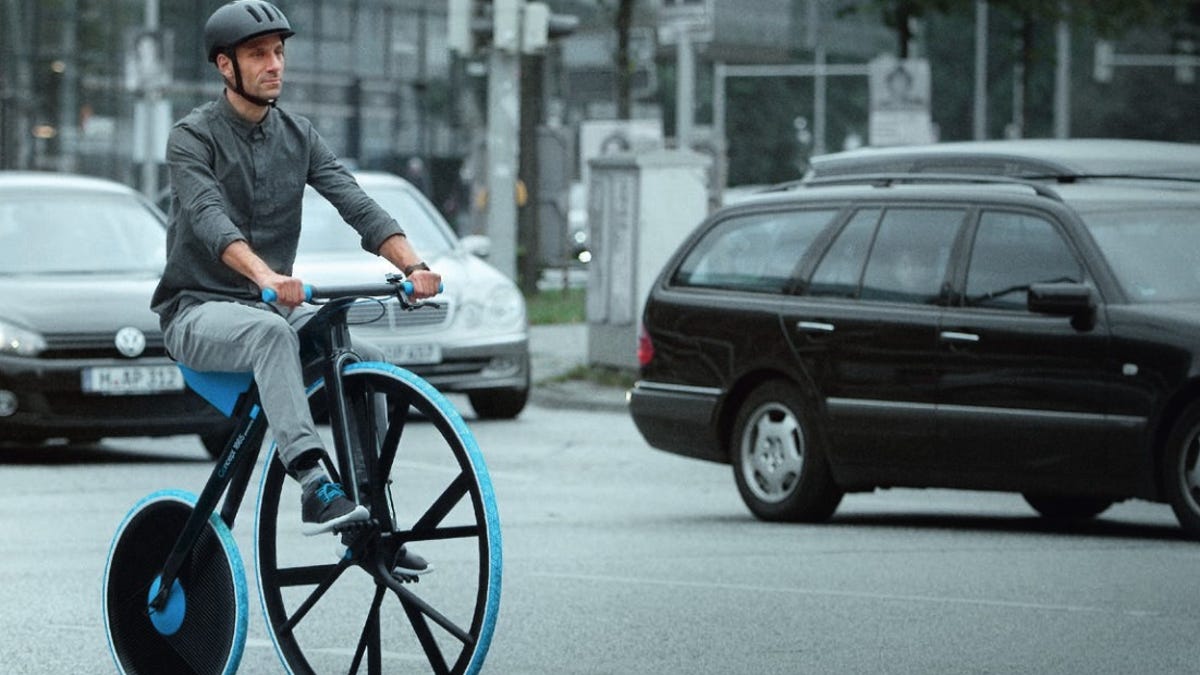Electric velocipede adds tech touches to olde-tyme bike
Twirl your handlebar mustache and hop on the Concept 1865, a 19th-century bike reimagined with modern plastics and an electric drive.

I'm so excited about the Concept 1865 electric velocipede I might have to lie down on my Victorian fainting couch for a moment. OK, better now...
For those who haven't watched any silent films recently, a velocipede is any one of several early bicycles with pedals attached to the front wheel. Unlike the bikes of today that sport symmetrical tires, however, they featured wheels of varying sizes (often a giant one in front) to improve the transmission ratio.
German design studio Ding3000 has reimagined that bike of yore with the Concept 1865, a velocipede that packs a 250-watt electric drive and a detachable seat with an integrated battery.
Ding3000 created the ready-to-ride prototype in collaboration with German chemical company BASF, which was founded in 1865 and wanted to take a trip back in its own history to a time when Karl Drais' wooden Dandy horse got its first pedal.
While the one-off bike looks backward by leaving out a chain, sprockets, and coaster brake, it's made almost entirely of modern BASF plastics, save for the metal brake, axles, and motor.
The maintenance-free tires (39 inches for the front penny-farthing wheel, which is directly driven by the crank, and 24 inches for the rear, which houses the electric drive) use bright blue thermoplastic polyurethane, a light, durable, and elastic material that's also shown up on the midsole of the Adidas Energy Boost running shoe. The vehicle's forks integrate LEDs and inlaid optical waveguides that make conventional bike lighting systems superfluous.
"By implementing this design study, Ding3000 obviously does not intend to reinvent the bicycle, let alone the wheel," the firm says. "Under the slogan 'Rethinking Materials,' the unusual e-bike is in fact an invitation to customers to join the company in developing new applications and product ideas utilizing advanced plastics."
Darnit. I was looking forward to seeing all those hipsters commuting to work with handlebar mustaches and monocles.
(Via Designboom)

